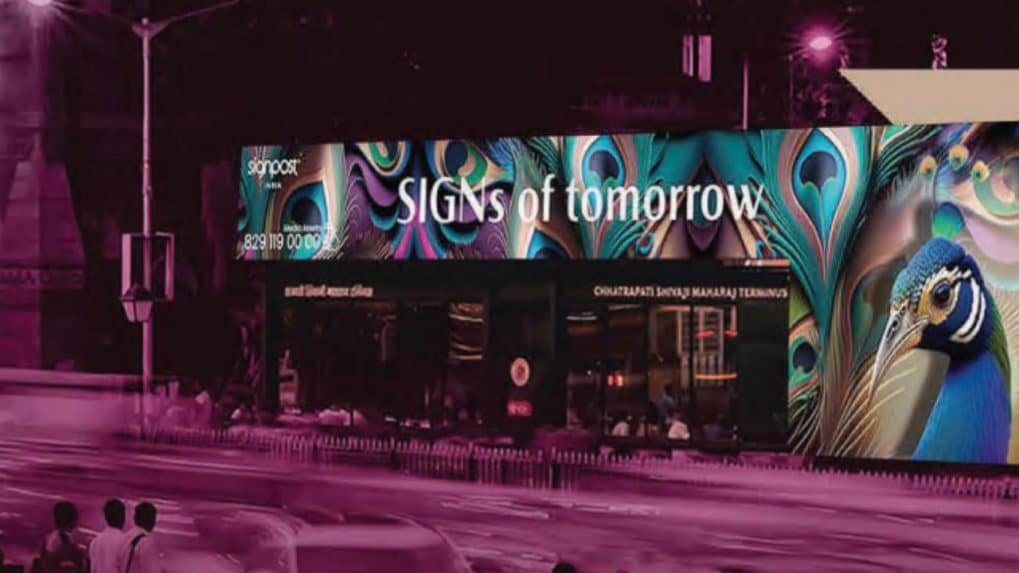Digital
Why OpenAI is hiring 100 ex-bankers: Inside the ChatGPT-maker's secret project to automate Wall Street's grunt work

Signpost India Limited reported a strong top-line performance in FY 2024–25, with revenue climbing 16.98% year-on-year to ₹45,322.41 lakh, up from ₹38,744.54 lakh in FY 2023–24. However, profitability came under pressure, as profit before tax dropped 31.16% to ₹4,545.09 lakh from ₹6,571.38 lakh in the previous year, according to the company’s annual report.
Despite the decline in margins, Signpost said it had delivered record results on the back of disciplined execution, premium product mix, and better utilization across its network. EBITDA stood at ₹9,410.20 lakh with a margin of 21%, while profit after tax came in at ₹3,390.35 lakh.
Expanding DOOH and Transit Footprint
The company continued to strengthen its leadership in the out-of-home (OOH) sector, particularly in digital OOH (DOOH) and transit advertising. Over the past year, Signpost extended its DOOH network with over 100 high-impact deployments in Mumbai, Bengaluru, and Kolkata, and grew its City Bus fleet from 2,500 to more than 6,800 branded buses, including new hubs in Hyderabad, Goa, Bengaluru, Chennai, and Kolkata. It also secured landmark contracts such as the ₹700 crore, nine-year Bangalore Metro agreement and new partnerships with mobility providers like Cityflo and Olectra.
Chairman Girish Kulkarni highlighted the company’s vision of merging “compelling design with reliable technology” to create assets that integrate seamlessly into cityscapes. “When compelling design meets reliable technology, cities become easier to navigate and more delightful to live in, and brands earn attention that is earned, not forced,” he said.
The company also expanded into Tier-2 markets such as Chandigarh, Lucknow, Puri, Siliguri, and Port Blair, with plans to enter up to 50 more cities in FY26. Transit branding, metro stations, and bus shelters remain central to its expansion strategy, with Signpost calling transit media its “growth flywheel.”
Tech-Led Innovation
Technology has become a cornerstone of Signpost’s offering. The company has integrated programmatic triggers such as weather, traffic, and real-time sales data into DOOH assets, enabling contextual and dynamic advertising. It also launched Captura, a proprietary OOH-specific CRM that manages asset availability, planning, bookings, and billing, while offering smart media planning, footfall analytics, and campaign ROI tracking.
Managing Director Shripad Ashtekar said Signpost is consciously following an “asset-light, tech-first” model. “We continue to reinvest prudently in technology, premium assets, ESG initiatives, and people—balancing growth with governance,” he noted, adding that the company’s innovations are designed to bring OOH closer to digital workflows for marketers.
Read more: ‘Reduce GST to 5%’: IOAA appeals for GST rationalization to boost OOH sector, civic infrastructure
Executive Director Dipankar Chatterjee emphasized that OOH has now become “an addressable and outcome-driven medium,” standing shoulder-to-shoulder with digital media. “With proof-of-play systems, programmatic buying, and analytics, OOH now offers precision targeting, accountability, and flexibility while retaining its scale and trust,” he said.
ESG, People and Global Outlook
The company also doubled down on sustainability and ESG, completing a 100% LED conversion across assets, pioneering eco-printing using cloth-based media, and introducing centralized smart lighting systems for energy optimization. Its workforce stood at 499 employees as of March 31, 2025, with Signpost emphasizing diversity, upskilling, and data-driven HR practices.
Signpost is also a member of the ECCO Global Communications Network, which gives its clients access to over 30 independent agencies worldwide.
Looking ahead, the company expects India’s OOH industry—valued at ₹59.2 billion in 2024—to grow at a 10% CAGR to ₹79.1 billion by 2027, with DOOH projected to expand at ~24% CAGR. Signpost said it will focus on Tier-2 and Tier-3 cities, SME advertiser participation, immersive 3D formats, and commerce-linked DOOH ecosystems.
“OOH is no longer just about static billboards,” Chatterjee added. “It is evolving into a smart, creative-first, and measurable platform that complements digital, connects with commuters, and delivers outcomes at scale.”
From purpose-driven work and narrative-rich brand films to AI-enabled ideas and creator-led collaborations, the awards reflect the full spectrum of modern creativity.
Read MoreIn a wide-ranging interview with Storyboard18, Sorrell delivers his frankest assessment yet of how the deal will redefine creativity, media, and talent across markets.